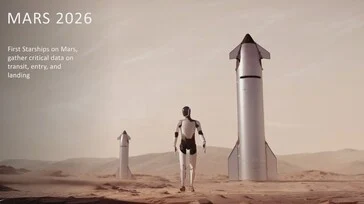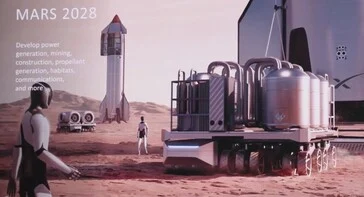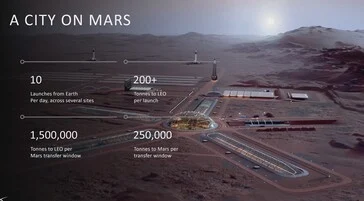Key Takeaways
1. SpaceX plans to build the Mars-ready Starship 3 rocket by 2025, with five rockets set for launch to Mars in late 2026, aiming for a landing in 2027.
2. The 2026 mission will not include humans but will deploy Optimus robots to demonstrate key technologies for Mars travel and landing.
3. In 2028, SpaceX aims to launch up to 20 Starship rockets to establish infrastructure for future crewed missions to Mars, with missions planned every two years.
4. Elon Musk envisions a fleet of Mars rockets operating like commercial airliners, with projections of up to 500 Starships landing by 2033 to support a Martian colony.
5. Successful implementation of the new Raptor 3 engine is crucial for the Starship 3 rocket, but no specific timeline for human landings on Mars has been provided.
SpaceX is gearing up to build a Mars-ready Starship 3 rocket in 2025, with plans to dispatch five of these rockets to the Red Planet in late 2026, aiming for a landing in 2027.
Timelines and Launch Windows
This aligns with the earlier schedule of 2026-2028 for Mars missions, which Elon Musk shared last year. The “transfer window,” which provides the best conditions for launching rockets to Mars, opens every two years.
The 2026 mission will not carry humans but will include Optimus robots. SpaceX has stated that these robots will “showcase important technologies for Mars travel and landing.”
Future Missions and Payloads
In 2028, when conditions allow for another Mars mission, SpaceX intends to launch as many as 20 Starship rockets, each with a significantly larger payload. These rockets will establish the foundational infrastructure and equipment needed for the first crewed flight to Mars.
After that, missions will occur every two years, with projections of up to 500 Starships landing by 2033. This is aimed at increasing “independence from Earth” by extracting and using Martian resources to support a colony.
According to Elon Musk’s keynote, “The Road to Making Life Multiplanetary,” there is a vision for a fleet of Mars rockets that would operate like commercial airliners, comparable to Boeing and Airbus.
Challenges Ahead
However, this remains largely aspirational, as SpaceX must first successfully implement the new Raptor 3 engine, which is designed to save over a ton in vehicle mass. Musk indicated that the Starship 3 rocket will be equipped with 42 engines, emphasizing that this design is unavoidable.
Interestingly, the presentation lacked a specific timeline for when humans might actually land on Mars, which had been mentioned in previous announcements.
Source:
Link






Leave a Reply